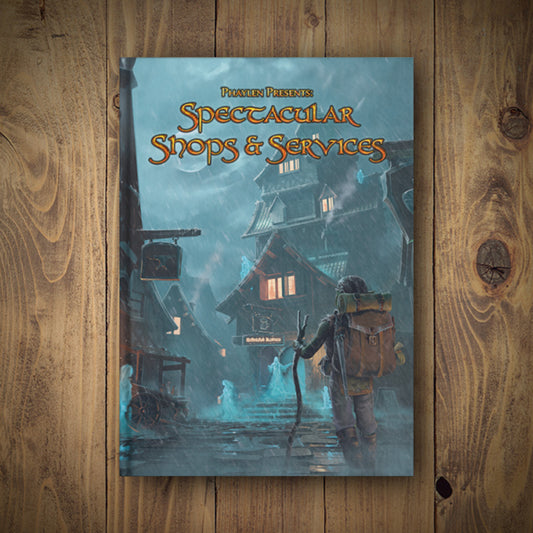
How to Adapt D&D 5e Monsters for Desert Environments: Tips for Dungeon Masters
Share
Let’s dive into another type of environment: the scorching, sun-bleached expanse of a desert. It’s a place of extremes—blistering heat during the day and bone-chilling cold at night. Shifting your standard 5e monsters into a desert setting isn’t just about swapping sand for grass; it’s about imagining how these creatures would adapt to survive in such an unforgiving place. Here’s a look at some traits and abilities that you can give your creatures to make them desert-ready:
Water Conservation:
Water Storage:
Description: Ability to store water in specialized body parts (e.g., humps like camels, succulent-like tissues).
Function: Allows creatures to survive long periods without water.
Efficient Kidneys:
Description: Highly efficient kidneys that concentrate urine to minimize water loss.
Function: Reduces the need for frequent water intake.
Nocturnal Lifestyle:
Description: Active primarily at night to avoid the extreme daytime heat.
Function: Reduces water loss and overheating.
Temperature Regulation:
Reflective or Light-colored Scales/Fur:
Description: Scales, fur, or exoskeletons that reflect sunlight.
Function: Helps keep the body cooler by reducing heat absorption.
Heat Dissipation Mechanisms:
Description: Structures like large ears, elongated limbs, or specialized blood vessels that help dissipate heat.
Function: Aids in cooling the body more effectively.

Burrowing Behavior:
Description: Tendency to dig and live in burrows during the hottest parts of the day.
Function: Provides shelter from the sun and maintains a cooler, more stable temperature.
Resource Acquisition:
Specialized Diets:
Description: Ability to derive moisture from food, such as consuming succulents or prey with high water content.
Function: Reduces dependence on external water sources.
Enhanced Foraging and Hunting Skills:
Description: Highly developed senses for locating scarce food and water sources.
Function: Increases chances of finding resources in a sparse environment.
Defense Mechanisms:
Camouflage:
Description: Coloration and patterns that blend with the sandy, rocky environment.
Function: Protects from predators and aids in ambush hunting.
Toxic or Venomous Traits:
Description: Venomous bites, stings, or toxins that deter predators or help in subduing prey.
Function: Increases chances of survival and success in hunting.

Mobility and Adaptation:
Adaptations for Walking on Sand:
Description: Broad, flat feet or specialized limbs that prevent sinking into the sand.
Function: Enhances mobility across loose, sandy terrain.
Flight or Gliding:
Description: Wings or membranes that allow for flight or gliding to cover large areas quickly.
Function: Efficient travel to find food and water over vast distances.
Reproductive Strategies:
Seasonal Breeding:
Description: Breeding cycles synchronized with periods of greater resource availability, such as brief rainy seasons.
Function: Ensures offspring have a higher chance of survival.
Egg and Offspring Protection:
Description: Strategies like burying eggs in cool sand, producing fewer but more resilient offspring, or developing protective casings.
Function: Increases the chances of young surviving harsh conditions.
By tweaking these traits and abilities, you can create unique, desert-themed versions of familiar monsters that feel right at home in the sand-swept wastes, adding exciting new challenges for your players!
Marc




